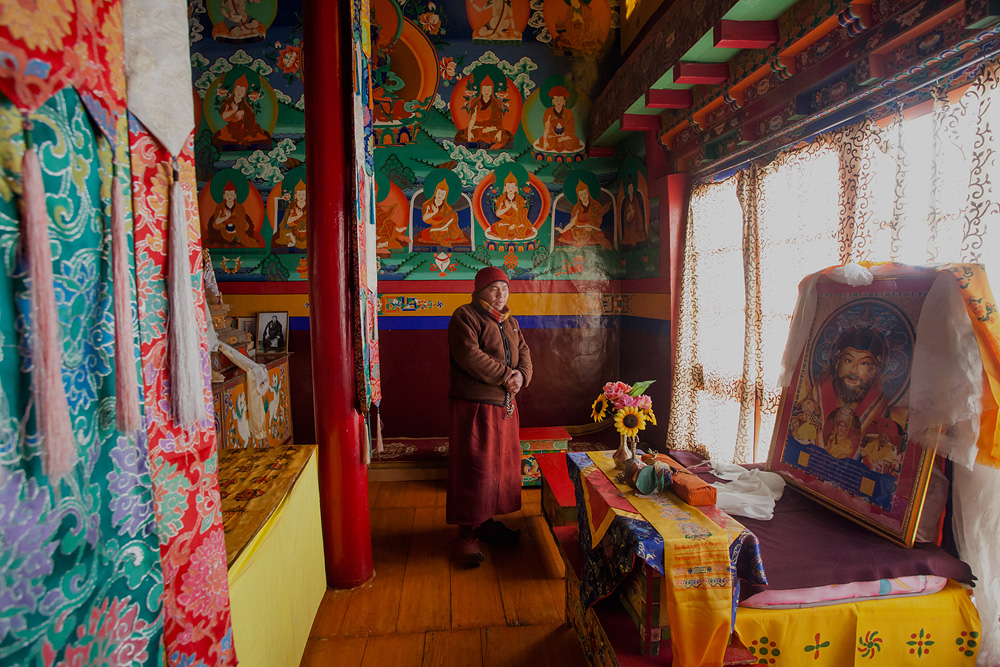Also see: Our photography tour to Ladakh in winter.
The pilot aligned the aircraft along the east-west direction of the Indus Valley before he reduced altitude. The aircraft gently zig-zagged in the sky, tracing the path of the azure river at the valley floor. With 6000 meter-high mountains rising steeply on either sides, the only way to descend into Leh was through the long-running trough of Indus River. From up in the sky, we followed the path of the river for a few minutes. When we had descended well below the altitude of the peaks that dominated the landscape, a steep U-turn at the widest part of the valley allowed us to make the final descent. We had arrived in Leh.
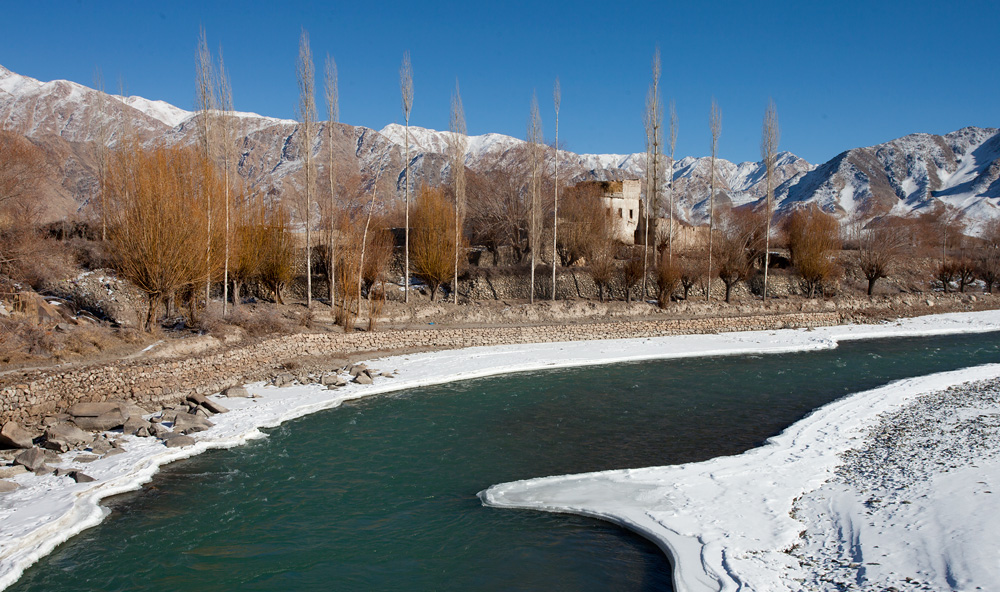
We taxied out of the runaway as the cabin crew made the usual announcements. For some reason, they decided not to mention the outside temperature, perhaps with a goodwill to let us stay comfortably in the warmth of the aircraft without worrying about the harsh weather that awaited us. It must have been anywhere between five to ten degrees below zero that morning, a comfortable day by local standards in winter.
A wave of cold pricked my face as soon as I stepped out of the aircraft. I was well protected with multiple layers of warm clothes that covered much of my body – good enough to help me survive the cold but never enough to make me feel cozy. Airline staff rushed us to the awaiting bus, asking us not to stay out for long. The bus, quickly filled up with passengers, took us to the terminal with much needed central heating. Out from the airport, it was again a short hop exposed to the cold before we were whisked away to our guesthouse in a waiting vehicle. It was a similar story on reaching the guesthouse, where we quickly got off the car and rushed into the warm interiors.
This was my fourth visit to Ladakh in as many years and a second one in winter months. Although temperatures never rose above the freezing point, it was warm compared to my last visit in the same season. The mountains weren’t as thickly covered in ice as they were during my previous visit. There wasn’t any snow to be seen on the roads.
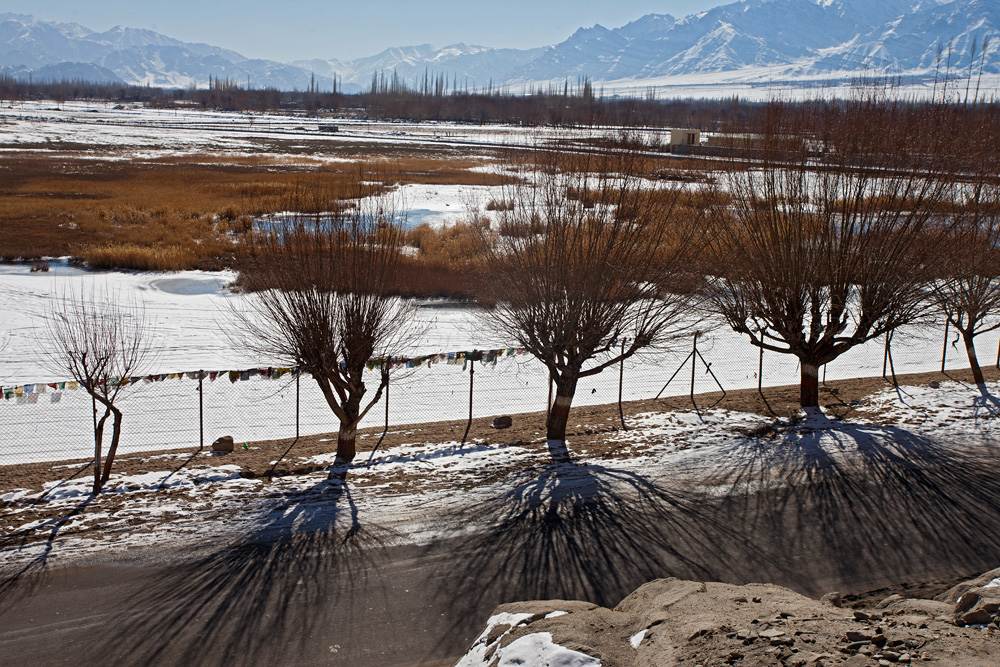
Compared to summer months, there were a few more things missing from the roads of Leh – vehicles and people. Falling mercury with the approach of winter had also brought a fall in tourist numbers. The shops selling curios, restaurants dishing out pizzas or Korean food, hotels of all sizes that dominate the landscape of Leh, the line of pigeon-hole enterprises with signs that announce “jeep safari, trekking,..” had all shut down until the next summer. Taxis that ferry the tourists had gone off the road. I peeked through a small enclosure with a sign that said ‘painteball arena’, only to see some clothes drying on a lane tied to poplar trees. ‘For six cold months, the busy tourist town goes silent. The few private vehicles occasionally seen on the roads belonged to the locals. The shops that stayed open catered to the residents and so did restaurants.
At ‘Friend’s Corner’, the most popular winter-time restaurant in the town, I saw only mongoloid-faced Ladakhis relishing on Thukpas and Chowmein. My host for the day’s lunch was Tundup, who runs a travel agency in Leh. He was spending his days mostly relaxed, but for some occasional planning for the upcoming summer rush. For the people of Ladakh, winter is a season for rest, festivities and merry making. The harsh winter weather doesn’t deter them; they are used to it.
A transition from summer to winter was also apparent in the landscape of Leh. The fields and gardens, which the people of the town and surrounding villages lovingly tend to, now stood brown and unattended. Poplar and willow trees had lost all their leaves. But the usually barren mountains had now come alive with a charming sprinkle of snow on their slopes.
It is this snow in the mountains and much larger deposits of it in the remote regions that has attracted me to Leh in winter. Two years ago, I had my first encounter with Ladakh’s winter over an expedition on the frozen Zanskar River, commonly called Chadar Trek. While I discovered how brutal the weather can get, I also fell in love in the snowy landscapes. I had now come back for more, to visit the frozen Pangong Lake and to drive on the snowfields that the eastern Changthang Plateau morphs into (more on these in another post).
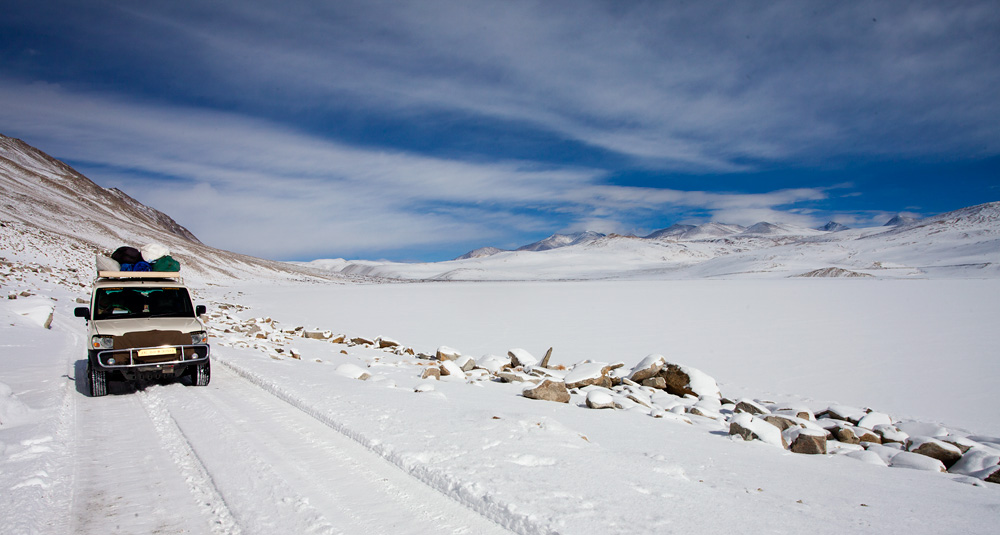
Roads filled with snow in Ladakh
So how is it, being in Leh in winter? It is a time of the year when you can’t take many things for granted, which you could have during a summer visit. It is important to plan for clothing elaborately, or you would find it hard even to get out of the airport. Most of the hotels remain closed, so it is essential to identify one that remain open, and book in advance. Those few that remain open necessarily offer heating, but almost no one will offer running water in the bathrooms (water freezes in the pipes). Only a handful of restaurants remain open in the main market, and finding one for dinner is not only a painful affair in the cold of the night, there will be even fewer that remain open compared to lunch time. Dinners almost always have to be at your hotel or guesthouse.
The roads in Ladakh, however, continue to stay open despite the harsh weather. Occasionally, snowbound high passes may be shutdown for a few days, but the Border Roads Organization works continuously to keep them open for vehicles. Visits to Pangong Lake (where temperatures dip to 30 below zero), Nubra Valley and Tso Moriri Lake continue to remain accessible.
The monasteries across Ladakh will also remain open, though most of the monks will be away and the activities will be reduced to a minimum. At Stakna Monastery, the only person we met was the caretaker-monk who was on duty , who opened the doors of the dukhang (prayer hall) for us. We moved quickly from prayer hall to the next temple and the next, unable to stand barefoot on a floor that seemed determined to freeze us. Outside the monastery, where it had just begun snowing, the village stood desolate as its people remained confined to the houses. Across the village, a deep blue Indus flowed gently, partially frozen on either sides.
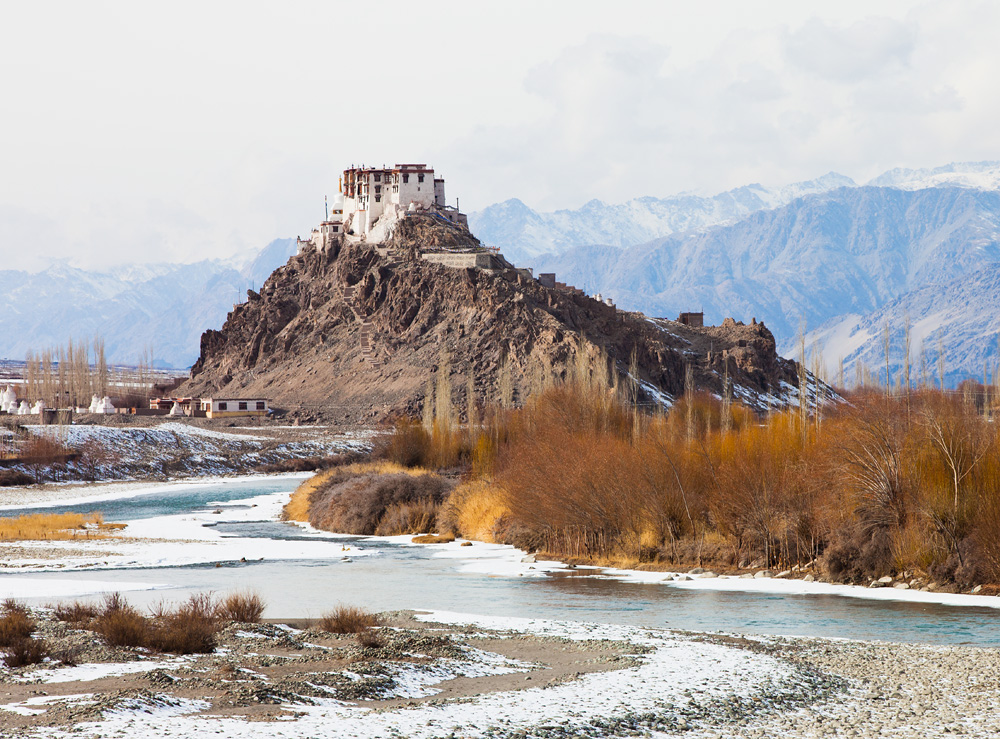
Indus River and Stakna Monastery
It was a similar story in Thiksey, where we were greeted to a near-empty monastery. As in Stakna, the only person we saw was the caretaker-monk. But in nearby Shey Village, it was a festival day with large gathering of people waiting to be blessed by the monks. We saw a congregation of a few thousands dressed at their best, patiently waiting for the activities to begin. Outside the monastery, many vendors had gathered, selling stuff as varied as ‘garam garam momos’, sun-dried apricots, ready-to-wear clothing and raw sheep wool.
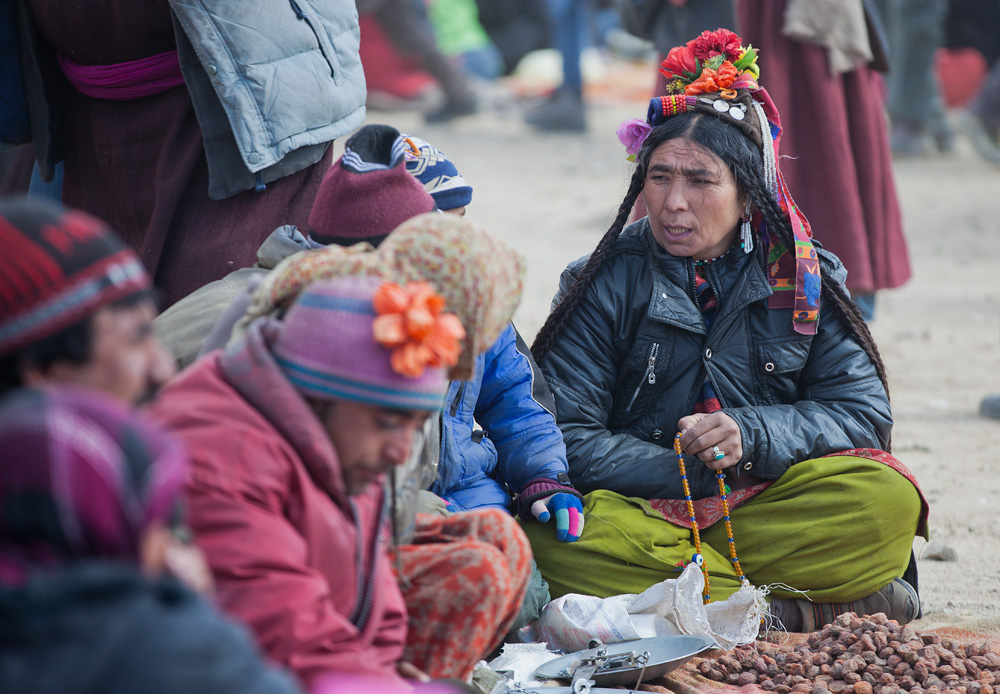
I bought some sun-dried apricots later in the day at Leh’s now quiet main-market. They tasted good, but were no match to the juicy apricots that you can simply pluck from a tree and relish during the summer days. There are many such pleasures that you can’t find in the winter months in Ladakh. Visitors have to endure the cold and live without the luxuries of summer. But the landscapes–snow-covered slopes, half-frozen rivers, fully frozen lakes, earth that looks like ice fields–are a splendid work of nature that can only be witnessed in this season.

